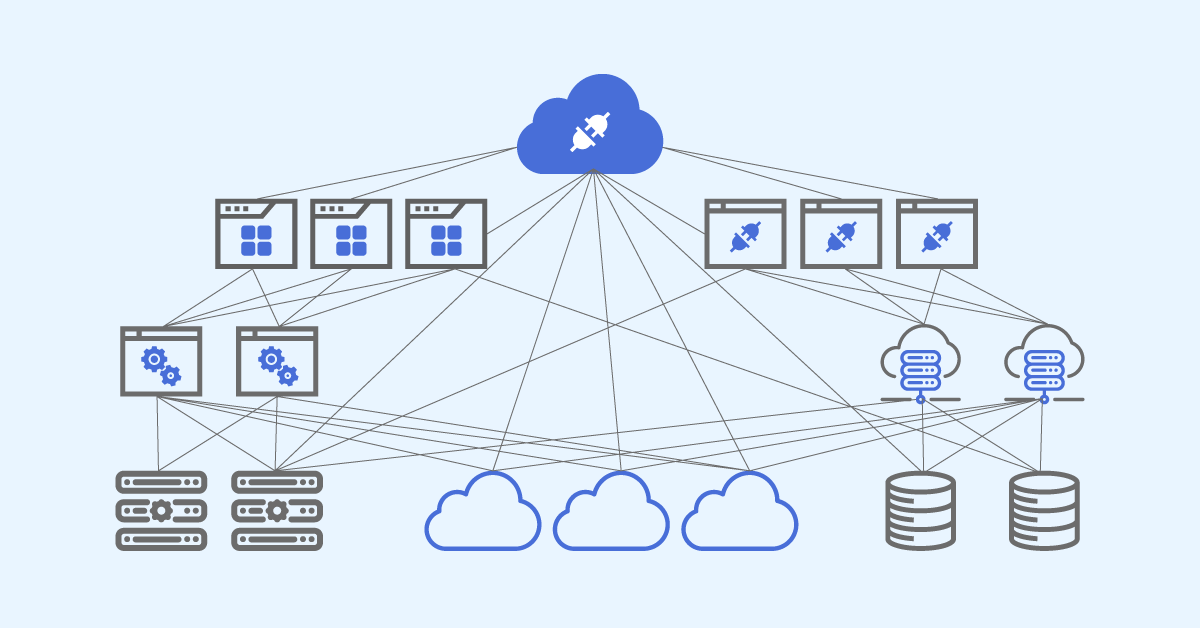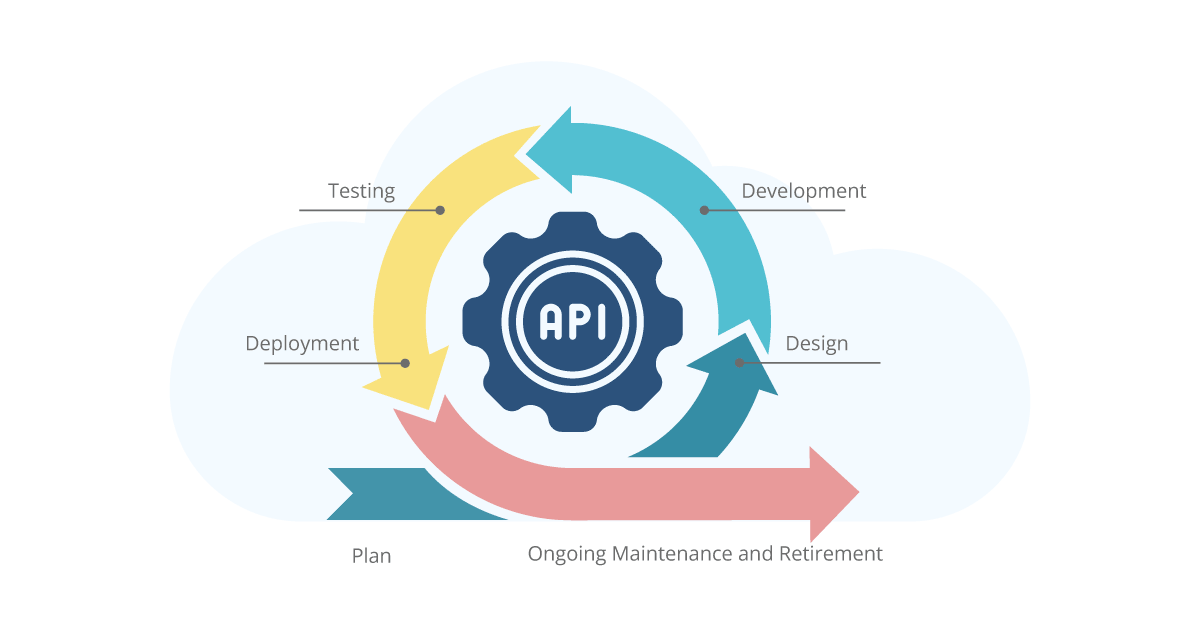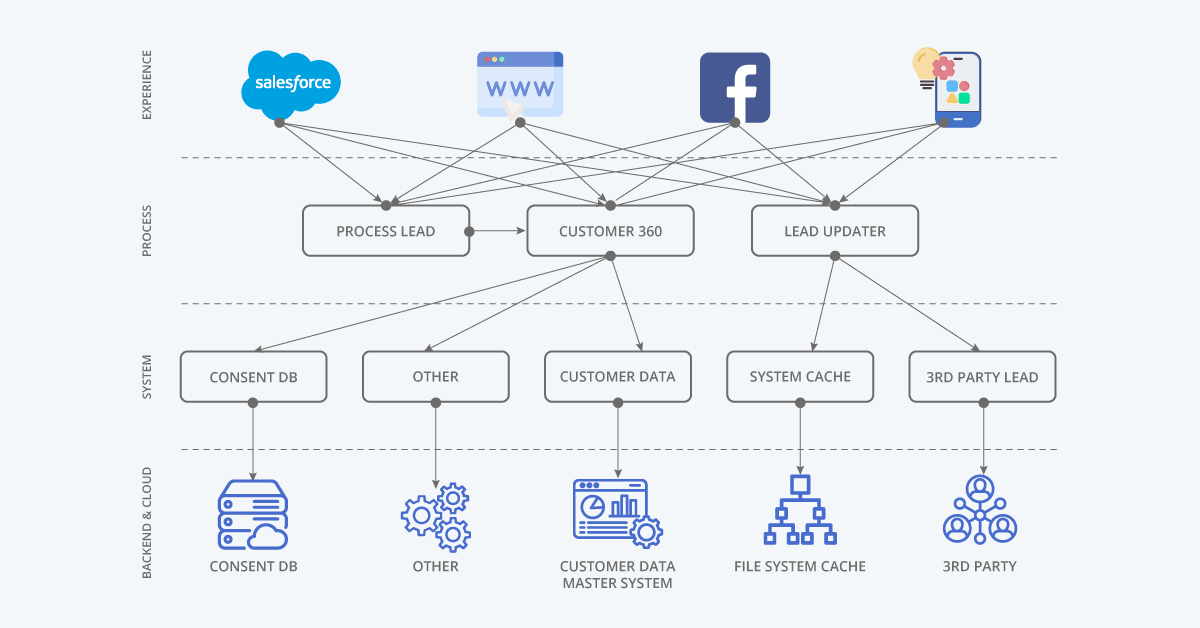In today’s business landscape, integration is crucial for accelerating digital efforts, and having the right Integration Platform-as-a-Service (iPaaS) is essential. However, it’s not enough to just connect systems and applications. To build a future-proof and agile business, an integration strategy and partner are necessary that recognize the limitations of iPaaS alone.
Aonflow iPaaS – Free for First 3 Months!
Build and run up to 1,500 transactions monthly with no cost. No payment info needed!
The world has gone through significant disruptions over the past two decades, starting with the shift towards the experience economy and the need for speed. Innovation became critical as organizations recognized that being fast was more important than being big.
The COVID-19 pandemic has further accelerated this shift towards the fourth industrial revolution, and businesses now need to do more than compete on product and price alone. Companies are empowering developers to build new experiences using their data and that of other organizations. Innovation and differentiation are now based on creating brilliant experiences, and businesses cannot simply buy that. They need to build it themselves.
Innovating With APIs
APIs, or Application Programming Interfaces, have become an integral part of modern business innovation. The development of APIs has evolved from Service-Oriented Architecture (SOA) to Web-Oriented Architecture (WOA), and the emergence of RESTful APIs. RESTful APIs are particularly advantageous due to their flexibility. They can handle various types of calls, return different data formats, and change structurally with the implementation of hypermedia. This flexibility empowers developers to build APIs that meet the needs of diverse customers and organizations.
The importance of APIs has grown due to the need for organizations to innovate and differentiate more quickly to meet changing customer expectations and offer new experiences on various platforms, such as mobile, web, and more. APIs have enabled organizations to do this by providing access to data and surfacing valuable insights. With the increasing reliance on cloud infrastructure and various Software-as-a-Service (SaaS) applications, the traditional IT infrastructure model no longer exists, and APIs have become a vital component of modern integration.
The use of APIs is not only beneficial for innovation and differentiation but also for modern integration. As more and more companies rely on cloud infrastructure and SaaS applications, traditional methods of integrating systems and applications are no longer sufficient. APIs provide a modern and flexible solution to the integration challenge.
APIs have become a critical component of modern IT infrastructure, with their usage spread across all areas of the business. From procurement services to user interaction tracking, APIs play a vital role in enabling businesses to function seamlessly.
However, with the increasing adoption of APIs, organizations also need to consider the need for API lifecycle management. Effective API lifecycle management involves designing, testing, deploying, and maintaining APIs, ensuring they are secure, scalable, and performant.
API management platforms provide organizations with the tools and capabilities they need to effectively manage their APIs throughout their lifecycle. These platforms can help organizations govern API usage, enforce security policies, and monitor performance, among other things.
Importance of API Lifecycle Management
APIs have become an integral part of modern business, with their usage spreading across all areas of the organization, from procurement services to mobile apps and user interaction tracking. As a result, businesses need to have a robust API lifecycle management strategy in place.
API lifecycle management refers to the process of managing APIs from creation to retirement, including design, development, testing, deployment, and ongoing maintenance. Effective API lifecycle management ensures that APIs are secure, reliable, and scalable, while also meeting business requirements.
To implement effective API lifecycle management, organizations must have a comprehensive understanding of their APIs and their usage. This includes tracking the performance and usage of APIs, monitoring security threats and vulnerabilities, and managing the API development process.
Additionally, API lifecycle management requires close collaboration between IT teams and other business units, including developers, project managers, and business analysts. This collaboration ensures that APIs are designed and developed with business requirements in mind and are aligned with the organization’s overall strategy.
Overall, API lifecycle management is critical for businesses that rely on APIs to drive innovation and digital transformation. By managing APIs effectively, organizations can ensure that they meet their business requirements while also maintaining the security, reliability, and scalability of their APIs.
Advancing To API-led Connectivity
The integration of applications is a crucial aspect of modern IT infrastructure. However, many organizations fail to approach it strategically, leading to issues in the long term. In some cases, lines of business purchase SaaS applications without considering how they will integrate with existing ERP systems. In other cases, integration is only considered on a short-term basis, which can be detrimental to the enterprise’s overall success.
IT leaders have the difficult task of managing two contrasting goals: ensuring stability and control over core systems of record and promoting innovation and quick iteration of applications that access those systems. This challenge is commonly known as bi-modal or two-speed IT, and traditional connectivity approaches may not be adequate.
A new approach is needed to tackle these obstacles by making use of current investments and empowering IT to make significant changes while still retaining oversight and control. The approach should facilitate agility while also enabling IT to regulate access, SLAs, and data quality. The transition towards providing assets as services and allowing line-of-business and IT teams to build their own connections, processes, and applications is essential. IT should transform into a facilitator for the business, moving away from project delivery and towards accomplishing business goals.
API-led Connectivity vs. APIs: Understanding The Difference
APIs and API-led connectivity are two related concepts that are important in modern software development and integration. While they are related, they represent different aspects of the same overall approach to software development and integration.
APIs (Application Programming Interfaces) are a well-known concept in software development. They are a way for developers to expose functionality in their software to other developers in a standard and well-defined way. APIs define the methods and protocols that other developers can use to interact with the software, and they typically provide a layer of abstraction that shields developers from the implementation details of the underlying software.
API-led connectivity, on the other hand, is a more recent concept that is closely related to APIs. It refers to an approach to software integration that relies on APIs to connect different software systems and applications. In this approach, each application exposes a set of APIs that other applications can use to interact with it. This allows applications to be connected in a flexible and modular way, without requiring the creation of custom integration code for each connection.
The key difference between APIs and API-led connectivity is that APIs are a specific mechanism for exposing functionality within an application, while API-led connectivity is an overall approach to software integration that relies on APIs as a way to connect different applications. APIs are a necessary component of API-led connectivity, but they are only one piece of the puzzle.
Aonflow is the leading integration platform.
You can kick-start by integrating your first-ever workflow in just a matter of minutes.
Maximize The Capabilities Of Ipaas Through Api-Driven Connectivity
iPaaS is centered around integrating various patterns, such as MFT, B2B, and application-to-application. The main objective is to facilitate the integrator in running processes where data moves within. But, the outcome of integration is not limited to mere integration, as it involves a new business model, fresh experiences, and a transformed organization that can quickly innovate. APIs are essential to this transformation and are crucial to keeping up with the pace of innovation that businesses and customers demand.
Many organizations have turned to vendors offering point-to-point iPaaS to automate repetitive tasks like sending email notifications and transferring data from Excel files to databases. However, these solutions have limited scalability, are tailored to individual user needs, and are not designed to replace the custom code that underpins many businesses. Only a limited number of platforms can address the broad range of use cases required to facilitate connectivity throughout an entire organization, ranging from simple integrations to a comprehensive transformation of IT infrastructure.
API-led connectivity offers a solution to the challenges of integration faced by organizations. It involves creating reusable and modular building blocks of integration that can be shared across the entire organization. This approach provides a consistent and reliable way of integrating systems and applications. By developing a library of APIs that can be leveraged by line-of-business users to build their integrations, processes, and applications, central IT teams can empower the business to innovate faster while maintaining control and visibility. This approach enables organizations to fully utilize iPaaS and achieve true digital transformation.
Final Thoughts
In today’s fast-paced business environment, organizations need to be agile and innovative to stay ahead of the competition. APIs have become an integral part of the technology ecosystem, enabling companies to build new experiences on various channels while meeting the diverse needs of customers. However, to fully unlock the potential of iPaaS, organizations need to adopt an API-led connectivity approach that goes beyond simple point-to-point integrations. By doing so, businesses can transform their IT infrastructure, create new business models, and drive real change while maintaining visibility and control over their systems of record.
Aonflow iPaaS – Free for First 3 Months!
Build and run up to 1,500 transactions monthly with no cost. No payment info needed!


